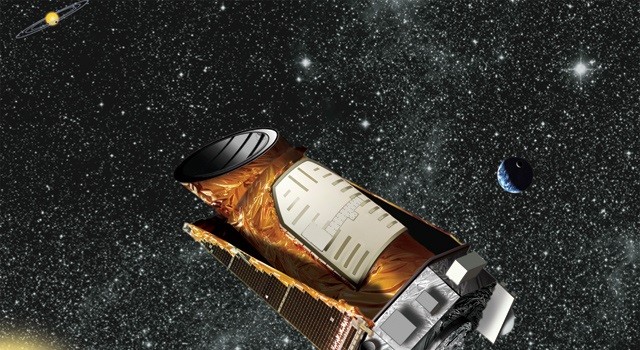
A team of international astronomers has discovered a new planet that has its mass similar to that of Earth.
Using data from NASA's Kepler space telescope, astronomers found the exoplanet - labeled as KOI-314c - orbiting a dim, red dwarf star, which is located approximately 200 light years away. This is the first time that an Earth-mass planet has ever been found.
KOI-314c might have the same mass as Earth but it's 60 percent larger in diameter, suggesting that the exoplanet has a very thick, gaseous atmosphere. "This planet might have the same mass as Earth, but it is certainly not Earthlike," study lead author David Kipping, of the Harvard-Smithsonian Center for Astrophysics, said in a statement. "It proves that there is no clear dividing line between rocky worlds like Earth and fluffier planets like water worlds or gas giants."
Kipping and his team found that KOI-314c is orbiting its host star every 23 days and estimated its temperature to be 220 degrees Fahrenheit (104 degree Celsius), which is too hot for life to exist. Astronomers also found that KOI-314c is 30 percent denser than water, which suggests the exoplanet is surrounded by hydrogen and helium atmosphere hundreds of miles thick. According to the researchers, KOI-314c would have likely begun its life as a mini-Neptune but lost some of its atmospheric gases over time due to the intense radiation of its star.
To measure the mass of KOI-314c, researchers used a method known as transit timing variations (TTV). This method is used when more than one planet orbits the parent star. If there are more than one planet, they would tug on one another, causing slight changes in times that they transit the star.
The astronomers also found a sibling planet orbiting the dwarf star. The second exoplanet - labeled as KOI-314b - is about the same size as KOI-314c but is denser and weighs about 4 times as much as Earth. KOI-314b was found to orbit the star every 13 days. "Kepler saw two planets transiting in front of the same star over and over again. By measuring the times at which these transits occurred very carefully, we were able to discover that the two planets are locked in an intricate dance of tiny wobbles giving away their masses," said second author David Nesvorny of the Southwest Research Institute (SwRI).
The details of the discovery were presented in a press conference at the 223rd meeting of the American Astronomical Society on Monday (6 January). A paper detailing the findings of the study has been submitted to The Astrophysical Journal.

















